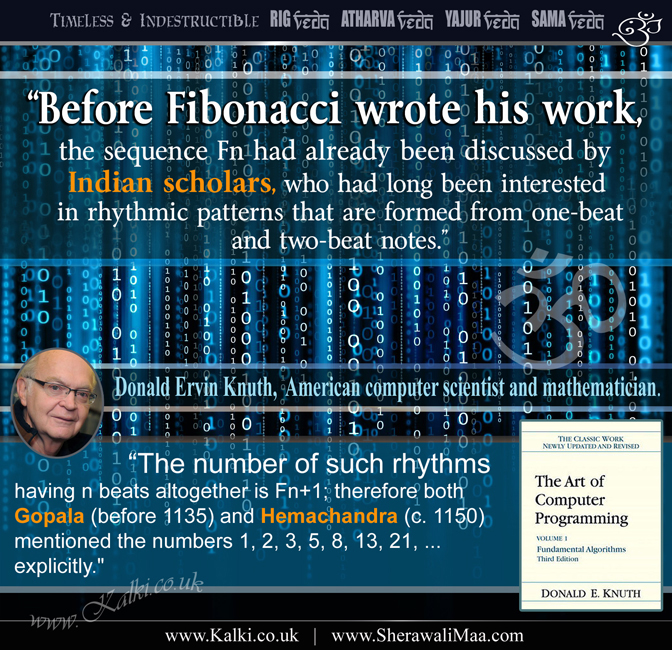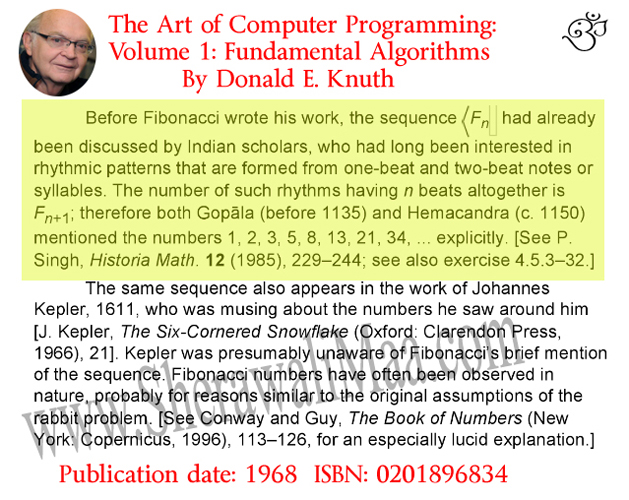
]

“Before Fibonacci wrote his work, the sequence Fn had already been discussed by Indian scholars, who had long been interested in rhythmic patterns that are formed from one-beat and
two-beat notes. The number of such rhythms having n beats altogether is Fn+1; therefore both Gopala (before 1135) and Hemachandra (c. 1150) mentioned the numbers 1, 2, 3, 5, 8, 13, 21, ...explicitly."
- By Donald Ervin Knuth (born January 10, 1938) is an American computer scientist, mathematician, and professor emeritus at Stanford
University. He is the author of the multi-volume work The Art of Computer Programming. Knuth has been called the "father of the
analysis of algorithms". He contributed to the development of the rigorous analysis of the computational complexity of algorithms
and systematized formal mathematical techniques for it. In the process he also popularized the asymptotic notation. In addition to
fundamental contributions in several branches of theoretical computer science, Knuth is the creator of the TeX computer
typesetting system, the related METAFONT font definition language and rendering system, and the Computer Modern family of
typefaces. |
Notable awards:
Grace Murray Hopper Award (1971)
Turing Award (1974)
National Medal of Science (1979)
John von Neumann Medal (1995)
Harvey Prize (1995)
Kyoto Prize (1996)
SOURCE:
The Art of Computer Programming: Volume 1: Fundamental Algorithms
By Donald E. Knuth ISBN: 0201896834
Publication date 1968
https://www.amazon.com/Art-Computer-.../dp/0201896834
ONLINE EDITION:
http://www.jchim.co.uk/PDFs/about_us/Fibonacci.pdf